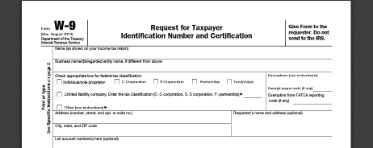
The amounts set aside for the first type of contingencies are known as reserves, while the amounts set aside for expected contingencies are known as provisions. It can also be said as a portion of available earnings that business firms keep aside to meet any sort of financial contingencies. Examples of reserves are General Reserve, Reserve for Expansion, Dividend Equalisation Reserve, Debenture Redemption Reserve, Investment Fluctuation Reserve, etc. Provisions are the present obligation (probability of occurrence is more than 51%) arising out of past events. Provision can be made by retaining the amount by way of providing for any known liability, the amount of which can not be determined accurately. It is a liability that can be measured only by using a substantial degree of estimation.
For example, the company will use a contra inventory account entitled LIFO Reserve to report the difference between the company’s current inventory cost (had FIFO been used) and the LIFO cost. Many decades ago, U.S. accountants decided to eliminate the word reserve when reporting the balances in contra asset accounts. The accounting profession felt that the word reserve might be interpreted to mean that money had been set aside to replace certain assets. No, Reserve is not a form of debt as it cannot be used to raise funds from another business entity unless mutually agreed upon otherwise. B) Company Y will supply $100,000 for one year from date n and ask for payment at end of each month during period n-12 as outlined in mutual agreement. At the end of the year, company Y will pay back $100,000 or more to the bank as per mutually agreed terms.
Expense Accruals and the Effect on an Income Statement
Generally, reserves are created to meet unknown future obligations which may arise due to miscellaneous business reasons. A) Company Z provides $100,000 to a customer on a mutually agreed term for one year based on delivery and payment cycle. The company will pay back $100,000 or more at end of each month during period n-12 as outlined in mutual agreement. The payments are made by the company to be allocated for a specific account called “Provision for Discount on Sales”. The future obligation is estimated based on mutually agreed terms and conditions.
On that date, company X will provide $100,000 required for one year to the bank for customers’ needs. At the end of the year, the company has to pay back $100,000 or more as per mutually agreed terms. A revenue reserve is from profits earned from a company’s or organization’s basic operations. A profit & loss appropriation account must be formed to construct a revenue reserve. The capital reserve is converted into a capital reserve that cannot be distributed as dividends to shareholders.
Answer 4
Provisions are used in financial accounting to set aside funds to provide for a future excepted loss/liability. It is compulsory for companies to make Provisions to meet their future expenses. Reserves, on the other hand, are the surplus funds that a company sets aside in order to invest in future projects. Read through this article to find out more how Provisions and Reserves are used in Financial Accounting. Provision is an estimated liability created to cover a loss on account of some future event, which is not expected to occur.
FBR Provides Explanation for Provision Regarding Consumer Loans – Pkrevenue.com
FBR Provides Explanation for Provision Regarding Consumer Loans.
Posted: Mon, 04 Sep 2023 14:31:35 GMT [source]
As a result, it cannot be funded by income from a company’s primary operations. Business experts advise saving a portion of profits as reserves for unforeseen occurrences, so businesses set aside money in reserves to cover those costs. General reserves, reserve for growth, dividend equalisation reserves, debenture redemption reserves, capital redemption reserves, higher replacement cost reserves, and so forth. A provision is created when you are expecting an expense in the future. A reserve is also created for an expected expense but it’s added to your bank balance, while a provision reduces your bank balance.
How to Post Cash Collected on Accounts Receivable
Such provision is created by debiting the Income-tax amount of the profit and loss account for that year and crediting the amount for provision for taxation. Reserves are a part of the owner’s capital/shareholder’s fund, and hence profit is not reduced by making any reserve. While running a business, some expenses or losses relate to the current financial year, but their amount is not known, as they are not yet incurred. For such expenses/losses provision is created, as a charge against profit. Likewise, a certain portion of the profit is retained in the business as reserves, to utilize them at the time of need, or to invest it in growth activities, or to cover future contingencies.

When it comes to the setup of these two resources, there are different reasons that result to their creation. Creating a Provision is a mandatory step to help mitigate the expected liability (3). At the same time, a Reserve is created on a voluntary basis, to serve the unaided interests of the business. However, the Reserves for Debenture and Capital redemption are a must have for a business.
Key Differences Between Provision and Reserve
For example, an entity routinely records provisions for bad debts, sales allowances, and inventory obsolescence. Less common provisions are for severance payments, asset impairments, and reorganization costs. The most common reserve is a capital reserve, where funds are set aside to purchase fixed assets. By setting aside a reserve, the board of directors is segregating funds regressive vs proportional vs progressive taxes from the general operating usage of the company. In accrual-basis accounting, recording the allowance for doubtful accounts at the same time as the sale improves the accuracy of financial reports. The projected bad debt expense is properly matched against the related sale, thereby providing a more accurate view of revenue and expenses for a specific period of time.
- Although the provisions of the Companies Act are applicable only to companies registered under that Act, this article deals with reserves and provisions along the lines of the definitions stated in the Act.
- The Provision means to keep aside a particular sum of money to cover up an anticipated liability which arises from the past events.
- Actual repairs are Rs 900 in the first year, Rs 2,100 in the second year and Rs 3,300 in the third year.
- Reserves mean that a portion of assets, equaling reserves, is free to be utilized by the business as it likes and assets equaling reserves are not required to pay liabilities.
- The Provision for Bad and Doubtful Debts has already been dealt with.
Both of these concepts are crucial for maintaining a company’s integrity. However, some of the capital profits are available for dividends if certain conditions are satisfied. Although the provisions of the Companies Act are applicable only to companies registered under that Act, this article deals with reserves and provisions along the lines of the definitions stated in the Act.
Loan Loss Reserves in Accounting
They show it in the liabilities side of their balance sheet as the Reserves set aside for settling future insurance claims of their policy owners. Reserve and provision are two accounting terms that sometimes confuse people. It is important to understand the difference between these two accounting terms and how they are used. It will also help if you know what these terms mean in the context of the banking system.
Instead, these depreciation amounts are attributable to a specific account named ‘Accumulated Depreciation‘ which records the collective provisions for depreciation. Such provision is created by debiting the depreciation account and crediting the amount of provision for depreciation. The provision for Depreciation is debited to the profit and loss account as per the rates of Depreciation allowed. The amount thus passed as debit balance reduces the value of assets that remain on books of account at a reduced cost or value bringing them down to their final book. So, the basic difference between provision and reserve is that net profit is calculated only after giving effect to all provisions, whereas reserves are created only after reckoning profit.
A provision is the amount of a cost or reduction in the value of an asset that a business chooses to record in its accounting system before having accurate knowledge regarding the exact amount of the expense or asset reduction. A general reserve is the retention of a percentage of revenue income for the purpose of improving an enterprise’s overall financial state and overall health. A loan loss provision is an income statement expense set aside as an allowance for uncollected loans and loan payments. This provision is used to cover different kinds of loan losses such as non-performing loans, customer bankruptcy, and renegotiated loans that incur lower-than-previously-estimated payments. Loan loss provisions are then added to the loan loss reserves, a balance sheet item that represents the total amount of loan losses subtracted a company’s loans. Provisions are made with the accrual concept, i.e.; the company has to show their expenses for the current year whether they have occurred or will occur in future, but their amount is uncertain.
